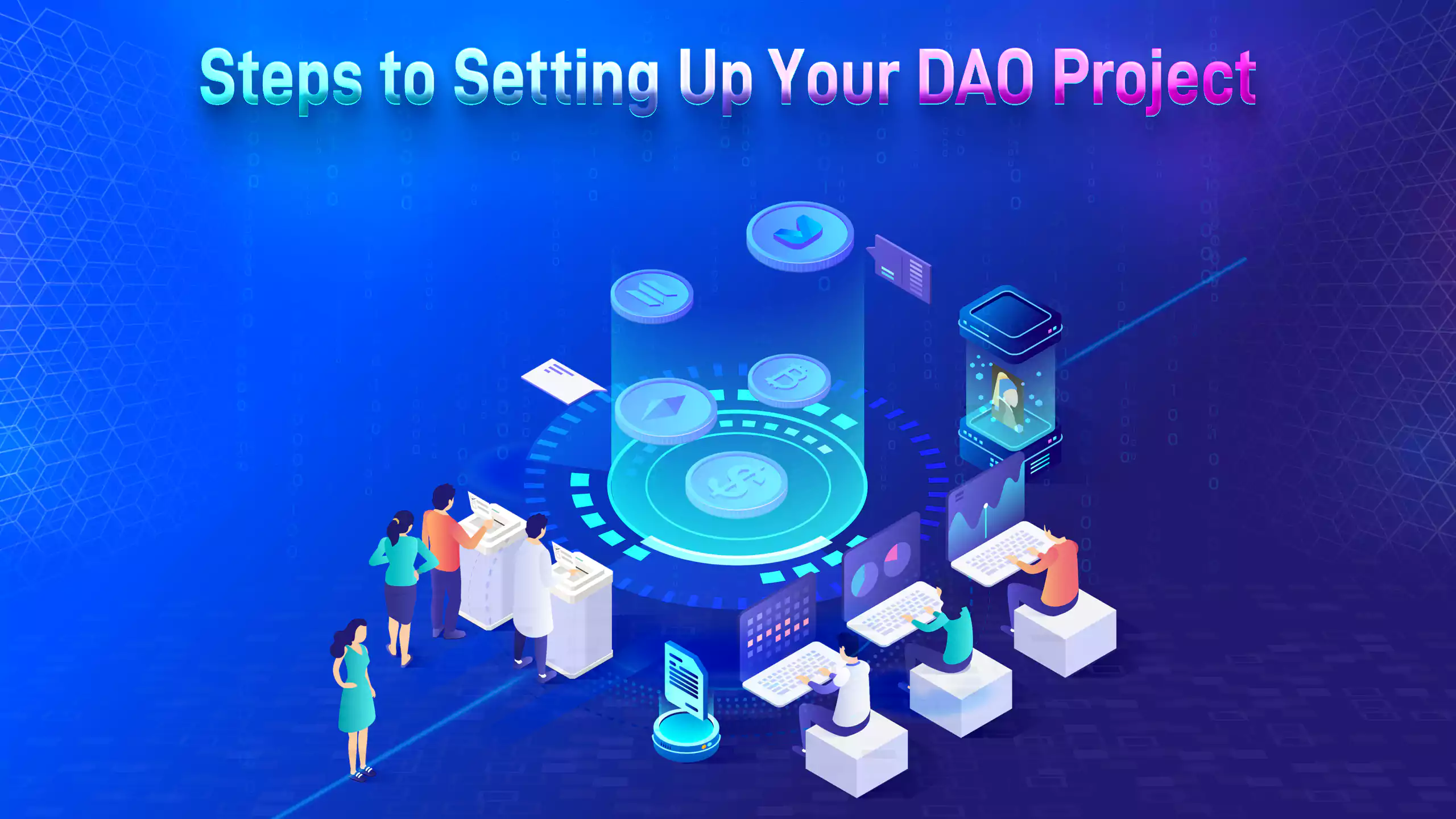With over $9.5 billion in AUM ( assets under management) and many players and investors, DAOs are revolutionizing all we know about corporate governance. Since 2016 when the first DAO launched till date, conversations about the possibilities and use cases of DAO have remained at the intersection of blockchain and governance. From GenesisDAO to MakerDAO and ConstitutionDAO, over 4800 are deploying the DAO governance systems to meet their design objectives, with incredible figures to show for it.
Maybe you're prospecting the idea of setting up a DAO project but unsure exactly how to go about it, read on and this article will guide you through the essential steps to setting up your DAO project.
What is a DAO?
A Decentralized Autonomous Organization (DAO) is a community-led entity without a central authority. It is fully autonomous and transparent governance commonly used for projects, dApps, and crypto investment funds. DAOs run on smart contracts that comprise foundational rules and execute consensual decisions. These smart contracts automate decisions like assignment of tokens, cash management, pricing, and inventory control based on pre-agreed rules.
Members vote on crucial decisions such as technical upgrades, treasury allocations, and publicly audit codes using their tokens. There are token rewards for participation in governance, particularly in voting, to incentivize community traffic and usage, boosting token value. Typically, persons holding the DAO's governance token enjoy a voting power proportional to the number of tokens.
DAO became famous with The DAO, after an attack just three weeks after raising over 12.7 million worth of Ether due to a flaw in the algorithm. Though these funds were recovered through a hard fork, post-2016 was a gloomy period for the DAOs. However, the tech has witnessed noticeable improvements over the years and is now famed as one of the most widely used governance systems for Defi and DApps projects.
But primarily, DAOs are still in their infancy, and use cases are unlimited. There are various types of DAOS, covering Social DAOs, Protocol DAOs, Grant DAOs, Venture DAOs, Media DAOs, etc. For instance, ConstitutionDAO was designed to raise funds to purchase the first print of the US Constitution, raising over $47 million. For LinksDAO, the project design was to raise funds to buy and develop a golf course, raking in $10.5 million.
Factors to Consider Before Setting Up your DAO
While DAO projects vary in design objectives and use cases, they follow the same basic principle. However, before setting up your DAO project, there are critical points to consider.
Purpose
The purpose of your DAO will shape the design and determine the type of DAO you're planning to set up. Ledger has curated an excellent repository for examples of DAOs and designs you can adopt. Map out exactly what you want to achieve and blueprints for each milestone.
Voting Mechanism
This is the user's way of interacting and making changes on the DAO. You can create your customized voting mechanism or deploy third-party providers.
Token Use Cases
A clear understanding of what you seek to achieve will help determine the methods of allocating tokens. This will help you fundraise effectively and rev up support from your initial community.
Governance token is often the measure of power a user has in the DOA, determining how people prove their opinion. Generally, you can use your DAO tokens for DAO governance and voting and incentives and rewards.
Funds Management
Most DAOs either have access to crowdfunding or a treasury. Funds are saved in multi-signature wallets that can only be accessed and used subject to a consensus by participants.
How to Create a DAO
Setting up your DAO is arguably the most technical stage. There are options of open source solutions available for this purpose. Aragon is a popular choice if you're looking to create Ethereum-based DAOs, while Snapshot works over various blockchain protocols. Though they provide about the same structure, their methods differ.
For instance, some DAO systems are suitable for on-chain polling while others work off-chain. Ultimately, your choice depends on the specifics of your DAO project. When deploying your DAO to a blockchain protocol, ensure that you have enough crypto for transaction fees.
Let's talk about setting up on Aragon and Snapshot.
Aragon
Aragon offers open-source software via the Aragon client that allows you create customized DAOs. You can create your DAO project on Ethereum, Andromeda, Polygon, or Harmony with Aragon. Creating a DAO on Aragon is pretty straightforward, but here's what you need to do:
- Own an Ethereum Name Service (ENS) domain.
- Confirm that your wallet has sufficient crypto to pay the DAO creation fees (0.2 ETH and gas fees)
- Create the organization via the Aragon DApp after linking it to the ENS domain. Feel free to explore the various preset organization structures and select the one that best matches the design you have in mind.
- Configure the functions such as the percentage of support needed to form consensus, vote duration.
- Launch.
Check out Aragon's FAQ for further information on setting up.
Snapshot
Snapshot is an off-chain voting mechanism that is customizable and uses digital signatures through wallets to cast votes based on token owners' Snapshot. After selecting a block, all token owners or stakers have their holdings pooled towards a vote.
This helps prevent DAO community users from buying more tokens to manipulate open votes. The on-chain voting mechanism works best for multi-chain projects where users have governance tokens across several blockchains.
You can create your voting system this way:
- Own an Ethereum Name Service domain. Ensure that this is on the Ethereum mainnet, notwithstanding the specific blockchain your project operates on.
- Connect your Snapshot to your ENS domain.
- Configure your setting, such as voting terms, power, strategies, and admins.
- Use your proof of ownership of the project and over at least 1000 members to verify your space.
- Launch.
You will find more information in Snapshot's guide.
Conclusion
Setting up your DAO project isn't as complicated as it sounds. Remember to configure your DAO to your taste, following the guide on the specific DAO system you're using. With the few tips shared in this article, you'd be on your way to building one of the most future-forward governance systems for your project.






